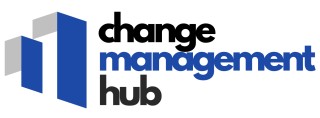-large-teaser.webp)
The Essence of a Release Train Engineer
The Importance of a Conductor in Agile Environments
In the dynamic realm of software development and agile methodologies, a Release Train Engineer (RTE) plays a pivotal role. They act like a conductor, guiding the team in a harmonious direction to ensure that projects are delivered smoothly and efficiently. This individual is at the heart of the Agile Release Train (ART), orchestrating the work of multiple teams within a program. Their main objective is to manage and optimize activities across the release train, ensuring alignment with both the Scaled Agile Framework (SAFe) and project goals. The RTE role is not just about management; it's about serving the teams as a servant leader, facilitating continuous improvement and fostering an environment where teams can thrive. As key facilitators, Release Train Engineers coordinate across multiple scrum teams, playing an integral role in both team dynamics and project management. They ensure communication flows seamlessly between team members, scrum masters, and other stakeholders, and that every participant is aligned with the larger vision. RTEs need a comprehensive understanding of lean and agile principles, acting as the bridge between project management and technical development. This requires a blend of skills, including excellent communication, leadership expertise, and a deep understanding of agile methodologies. The success of a release train often hinges on the RTE’s ability to balance strategic oversight with hands-on guidance. Unlocking the full potential of this role within agile frameworks is essential for navigating the future of digital transformation and leadership in strategic management. For organizations aiming to keep pace with rapid developments, an effective RTE is an invaluable asset, aligning team efforts and ensuring every project release hits its mark. Explore more on this topic to deepen your understanding of RTE's role in strategic management.Key Skills for Effective Change Management
The Core Skills for an RTE
In the realm of change management, a Release Train Engineer (RTE) plays a pivotal role. Their responsibility extends beyond just managing releases to ensuring that increments delivered by agile teams align with the overall objectives of the organization. To establish and maintain this coherence, RTEs need to harness an array of essential skills.
Firstly, an adept RTE should be proficient in agile methodologies. This includes having a comprehensive understanding of the Agile Release Train (ART), and the ability to function within frameworks like Scrum and Scaled Agile Framework (SAFe). An RTE is not just the glue that holds the development process together but also the navigator steering towards the agile change management strategies.
Furthermore, effective communication skills are indispensable for an RTE. They must bridge the gap between different teams and stakeholders, facilitating the flow of information across segments of an agile release train. This coordination is crucial in overcoming bottlenecks and streamlining the process for smoother release trains. Being an effective servant leader, the RTE also embodies the role of scrum master principles, promoting continuous improvement and lean agile development practices.
Additionally, an RTE should possess substantial project management skills. They must orchestrate the various components of a software development project, aligning them with the strategic goals of the program. This requires a balance between rigid project management protocols and the flexibility integral to agile practices.
The ability to handle complex dynamics within and among train engineers and other team members enhances the RTE's effectiveness. Often, specialized certification, such as becoming a certified Scrum Master or achieving SAFe Release Train Engineer certification, can offer additional knowledge and credibility to an RTE in their management endeavors.
Ultimately, the skillset of an RTE shapes the success of agile release trains in achieving organizational objectives, driving program efficacy, and smoothing the pathway to agile transitions.
Navigating Challenges in Change Management
Overcoming Obstacles in Change Implementation
Change management is not without its hurdles. Even for seasoned release train engineers, challenges are part of the journey. These professionals must be adept at navigating these challenges to ensure projects succeed in an environment of constant evolution. One common challenge is resistance to change, often driven by apprehension of unfamiliar processes or fear of uncertainty. Release train engineers leverage their skills as servant leaders to address this, facilitating open communication among team members, reassuring them, and nurturing an environment of trust. This approach aligns with the principles of the scaled agile framework, prioritizing transparency and adaptability. Another significant challenge is maintaining alignment within the agile release trains, especially as organizations scale. This is where the role of the release train engineer becomes crucial. By orchestrating the scrum teams and ensuring continuous improvement, they ensure that all elements of the organization are moving towards a common goal. Additionally, technical hurdles in software development projects often arise, requiring RTEs to possess a blend of technical proficiency and strategic foresight. Adept at applying lean agile practices, they work alongside scrum masters and other team leaders to devise innovative solutions that promote seamless program execution. Ultimately, overcoming these challenges requires a deep understanding of agile methodologies and a commitment to fostering a collaborative work environment. As you explore navigating the complexities of system changeover, you'll see how RTEs use their expertise to drive successful transformations.The Agile Connection
The Interconnection Between Agile and Change Management
In the dynamic world of change management, the agile methodologies play a pivotal role. Agile frameworks, such as SAFe (Scaled Agile Framework), offer a structured approach to managing complex projects and promote continuous improvement. A Release Train Engineer (RTE) serves as the crucial link within this framework, ensuring that Release Trains move forward smoothly towards achieving program objectives. This methodology allows teams to respond efficiently to changes, which is a core element in the realm of change management. By employing iterative cycles, or "sprints," it ensures that project goals align with evolving requirements. The presence of an engineer RTE and scrum masters facilitates this process by acting as servant leaders, guiding the ART (Agile Release Train) and assisting team members with any impediments. Moreover, the integration of lean-agile principles into change management initiatives helps streamline processes, reduce waste, and cultivate a culture of collaboration across teams. Train engineers, by working alongside scrum masters and leveraging the agile framework, drive effective project management and development within the organization. Integration of certification programs furthers the skill set of team members, enabling them to handle challenges adeptly. Through this structured approach, RTEs foster a conducive environment where scrum masters and other team members can thrive, which ultimately supports the overarching goals of change management and enhances the project outcomes.Building Collaborative Teams
Fostering Team Synergy for Successful Change Management
Building highly collaborative teams is essential in the realm of change management, especially under the agile framework. A Release Train Engineer (RTE) plays a vital role in ensuring that teams work cohesively towards common objectives. This often involves cultivating an environment where communication is seamless, and every team member feels valued and heard. In scaled agile environments, RTEs serve as servant leaders, bridging gaps between various teams within a release train. This role demands an acute understanding of team dynamics and the ability to foster a collaborative culture. The RTE must not only facilitate agile release trains but also encourage continuous improvement across the teams they lead. One of the key strategies for building collaborative teams is leveraging the expertise of scrum masters and other team leaders. These professionals offer insights and training, enhancing the skills of team members and ensuring everyone is aligned with the agile methodologies. By organizing regular program increments, RTEs ensure that teams remain focused on the incremental aspects of project management, keeping the train art running smoothly. The power of collaboration is also rooted in the commitment to lean agile practices. This approach helps eliminate inefficiencies, allowing teams to focus on high-priority tasks. With a focus on teamwork and trust-building activities, RTEs guide their teams through project challenges, preparing them to navigate changes effectively. To measure the success of these collaborative efforts, regular feedback sessions are essential. This not only enables the identification of areas needing improvement but also reinforces the connection and trust between the team members and their train engineers. A well-functioning collaborative team is a testament to the skills and expertise of an RTE, ensuring the seamless delivery of software development goals. By prioritizing collaboration and continuous improvement, RTEs ensure their teams are not just prepared to handle current change initiatives but are also ready to face future challenges with confidence and agility.Measuring Success in Change Management
Tracking and Evaluating Progress
Measuring success in change management is crucial to ensuring that release trains progress towards desired outcomes. In the context of an agile framework, it involves aligning project goals with broader organizational objectives. For a Release Train Engineer (RTE), understanding these metrics means steering the train in a direction that fosters continuous improvement and value delivery.
It's essential to adopt a quantitative and qualitative approach to measurement. Quantitative metrics might include the speed of delivery and defect rates within teams, while qualitative metrics may involve stakeholder satisfaction and team morale. To effectively assess the impact of the RTE role and other roles such as scrum masters and team members, organizations often employ dashboards and standardized reporting mechanisms.
Another key aspect is the focus on lean agile principles that guide an RTE to ensure that improvements and adaptations are data-driven. Evaluating software development processes against defined benchmarks ensures that the safe release is on track and contributing to broader program goals.
Agile methodologies support a culture of feedback and learning, which is crucial for refining processes and enhancing capabilities within the art (Agile Release Train). As rtes champion the cause of refined project management, they play a pivotal role in driving success through careful analysis of performance metrics.













